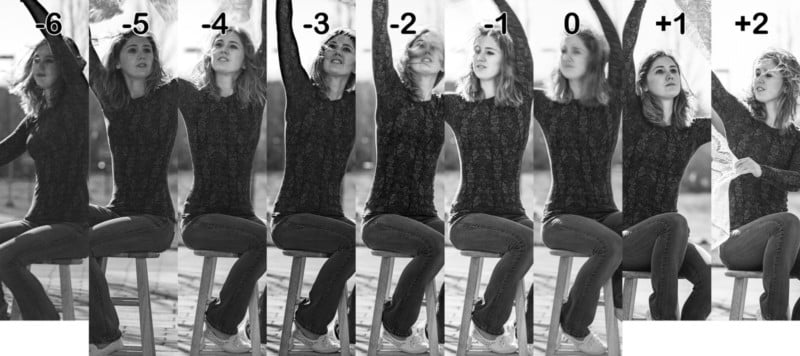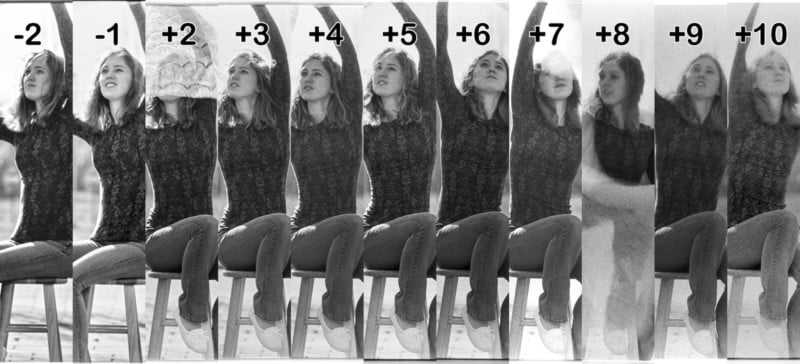Film vs. Digital: This is How Dynamic Range Compares
Photographer Bill Lawson wanted to compare the dynamic range of film and digital photography, so he recently went out and shot 10 stops overexposed and 10 stops underexposed for a 21-stop comparison to see how far you can go before the photo is unusable. He shares the results in the 7-minute video above.
Here’s what happens as you overexpose film and digital more and more:
![]()
![]()
![]()
![]()
![]()
And here’s what happens as you underexpose film and digital more and more:
![]()
![]()
![]()
![]()
![]()
As you can see, a way-too-overexposed digital photo becomes pure white and unusable while its film counterpart is still surprisingly acceptable. On the other hand, a way-too-underexposed film becomes a cloudy black mess while its digital counterpart still provides some semblance of a photo.
“I think that digital has a usable dynamic range of minus 6 or 7 to plus 2,” Lawson says. “I thought that at minus 8 stops, the grain made the digital image unusable. Of course, this is subjective and your opinion may vary. And different digital cameras may yield different results.”

“I think film has a usable dynamic range from minus 2 stops to plus 10 stops and beyond,” Lawson says. “I thought that at plus 8 stops and beyond, the film images had a distinctive, aesthetic look that I consider desirable. Of course, this is subjective and your opinion may vary.”

The takeaway from this demonstration is that when shooting film, you should expose for the shadows you’d like to capture details in and worry about highlights while processing your photos. For digital, you should expose for the highlights you’d like to capture details in and worry about bringing out shadow details in post-processing.
Or to put it even more simply, it’s safer to overexpose film photos and underexpose digital photos if you’d like to avoid losing details.